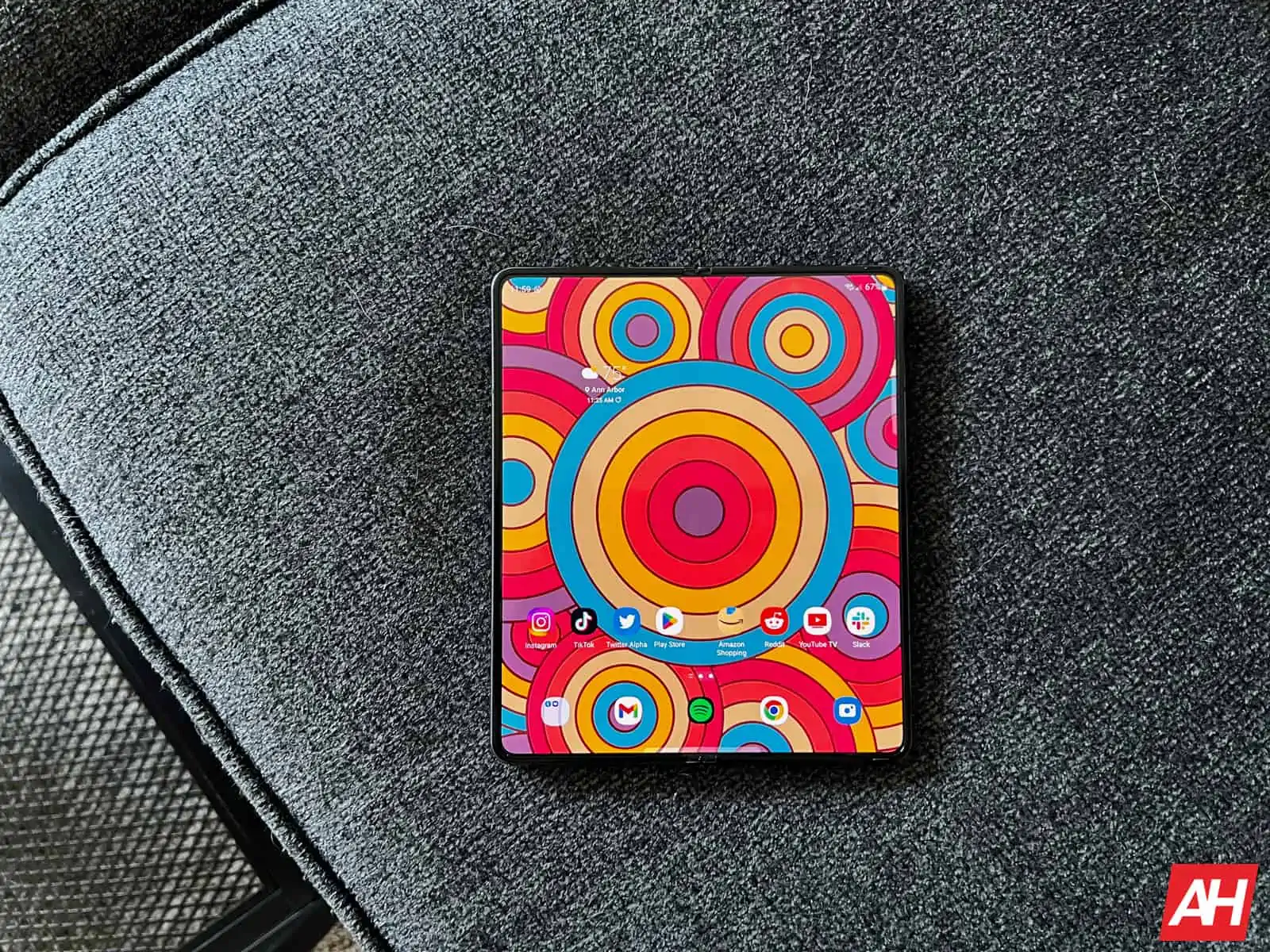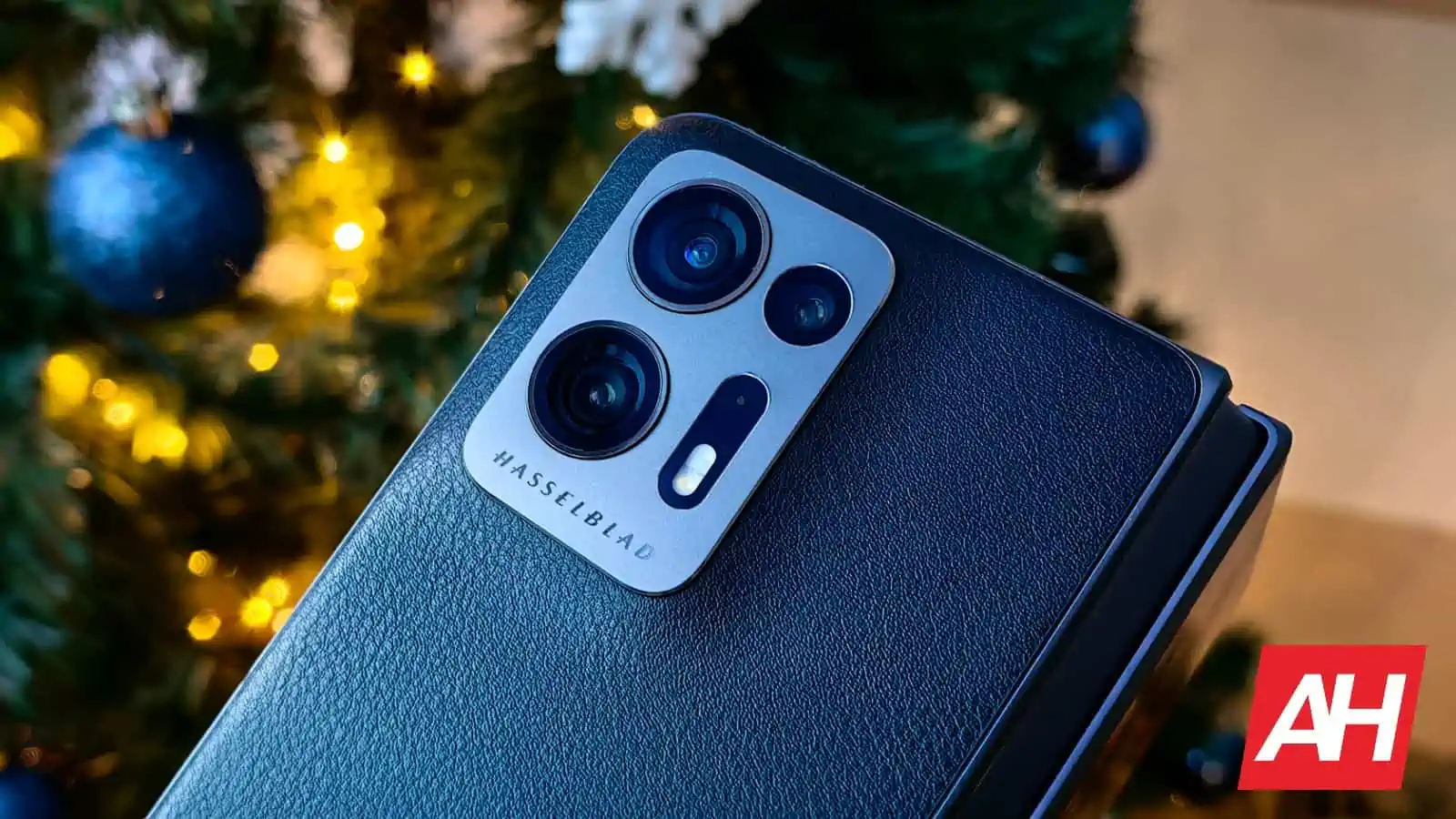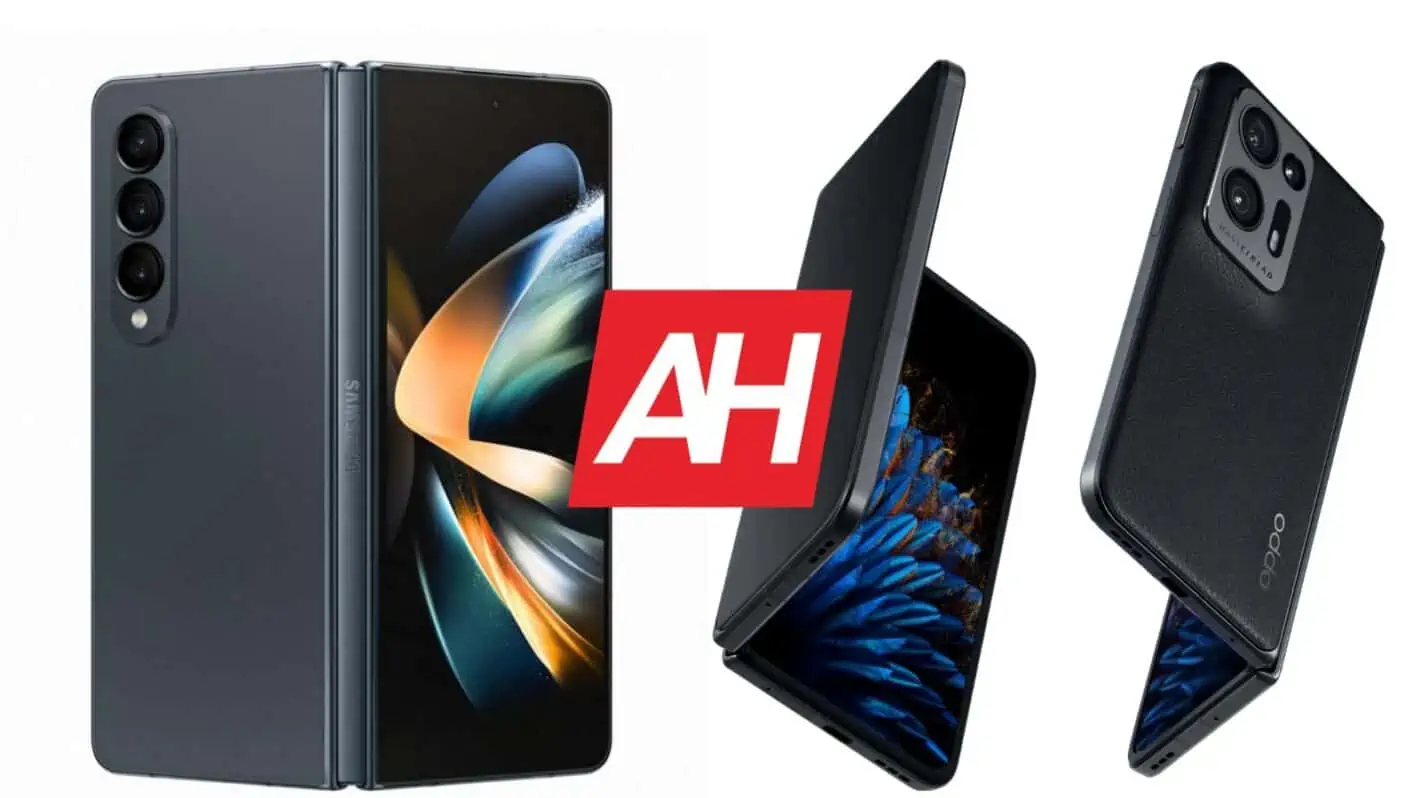The OPPO Find N2 is OPPO’s latest foldable smartphone, and one of our favorite foldables to date. The design of this phone is truly great, and so is the form factor. That being said, how does it compare to one of the best foldables in the market, an offering from Samsung. In this article, we’ll compare the Samsung Galaxy Z Fold 4 vs OPPO Find N2. We’ll first list their specs, and will then compare the two phones across a number of categories.
These two devices do differ quite a bit, despite the fact they’re both vertically-folding foldables. They do feel entirely different in the hand, and will provide you with an entirely different experience of using a foldable. So, if you’re interested in either of these two phones, we’ll try to help you make a purchasing decision. Do note that the Find N2 is not available globally, though, at least it was not at the time of writing this article. So if you plan to import it, do note that it comes with software made for China. You can install Google services on it and use it, though. Also, before we start, do note that the OPPO Find N2 is considerably more affordable.
Specs
| Samsung Galaxy Z Fold 4 | OPPO Find N2 | |
| Screen size | Main: 7.6-inch fullHD+ Dynamic AMOLED 2X display (foldable, 120Hz) Secondary (Cover): 6.2-inch HD+ Dynamic AMOLED 2X display (flat, 120Hz) |
Main: 7.1-inch fullHD+ LTPO AMOLED (foldable, 120Hz) Secondary (Cover): 5.54-inch fullHD+ AMOLED display (flat, 120Hz) |
| Screen resolution | Main: 2176 x 1812 Secondary (Cover): 2316 x 904 |
Main: 1792 x 1920 Secondary (Cover): 2120 x 1080 |
| SoC | Qualcomm Snapdragon 8+ Gen 1 | Qualcomm Snapdragon 8+ Gen 1 |
| RAM | 12GB (LPDDR5) | 12GB/16GB (LPDDR5) |
| Storage | 256GB/512GB/1TB (UFS 3.1), non-expandable | 256GB/512GB (UFS 3.1), non-expandable |
| Rear cameras | 50MP (f/1.8 aperture, 24mm lens, 1.0um pixel size, Dual Pixel PDAF, OIS) 10MP (telephoto, f/2.4 aperture, 67mm lens, 1.0um pixel size, PDAF, OIS, 3x optical zoom) 12MP (f/2.2 aperture, 123-degree FoV, 12mm lens, 1.12um pixel size) |
50MP (f/1.8 aperture, OIS, 24mm wide lens, 1.0um pixel size, multi-directional PDAF) 32MP (telephoto, f/2.0 aperture, 47mm lens, 2x optical zoom, 0.8um pixel size, PDAF) 48MP (ultrawide, f/2.2 aperture, 14mm lens, 0.8um pixel size, 115-degree FoV) Hasselblad color calibration |
| Front cameras | Main: 4MP (f/1.8 aperture, 26mm lens, 2.0um pixel size, under-display) Secondary: 10MP (f/2.2 aperture, 24mm lens, 1.22um pixel size) |
Main: 32MP (f/2.4 aperture, 22mm lens) Cover: 32MP (f/2.4 aperture, 22mm wide lens) |
| Battery | 4,400mAh, non-removable, 25W wired charging, 15W wireless charging, 4.5W Wireless PowerShare Charger not included |
4,520mAh, non-removable, 67W fast wired charging, 10W reverse wired Charger included |
| Dimensions | Unfolded: 155.1 x 130.1 x 6.3mm Folded: 155.1 x 67.1 x 15.8mm |
Unfolded: 132.2 x 140.5 x 7.4mm Folded: 132.2 x 72.6 x 14.6mm |
| Weight | 263 grams | 233 grams |
| Connectivity | 5G, LTE, NFC, Bluetooth 5.2, Wi-Fi, USB Type-C | 5G, LTE, NFC, Bluetooth 5.3, Wi-Fi, USB Type-C |
| Security | Side-facing fingerprint scanner | Side-facing fingerprint scanner |
| OS | Android 12 (upgradable) One UI 4.1.1 |
Android 13 ColorOS 13 |
| Price | $1,799 | CNY7,999 ($1,152) |
| Buy | Samsung | OPPO |
Samsung Galaxy Z Fold 4 vs OPPO Find N2: Design
The Samsung Galaxy Z Fold 4 is made out of metal and glass. The OPPO Find N2 comes in both metal + glass, and metal + vegan leather variants. The vegan leather model is slightly lighter than the glass model. Speaking of which, the OPPO Find N2 is much smaller than the Galaxy Z Fold 4, it’s both much shorter and much narrower. It is a bit thicker when unfolded, while they’re almost equally thick when folded. The Galaxy Z Fold 4 is thicker on its thickest part, though, despite the fact it’s much larger.
The Galaxy Z Fold 4 does not feature a gapless design, which is part of the reason why it’s so thick. The Find N2 does have a gapless design, it shuts flat, without a gap. The Find N2 also has a much less noticeable crease on the display than the Galaxy Z Fold 4, as it has an entirely different hinge. Speaking of which, both phones can sit in more than one position between folded and unfolded states, so you can prop them both up to take a selfie or something. One thing to note is that the Find N2 does not offer an IP rating, unlike the Galaxy Z Fold 4.
Both devices include a centered display camera hole on the outer display. When it comes to inner displays, the Galaxy Z Fold 4’s has an under-display camera on the right side, but not in the corner. That camera is still visible, though. The Find N2 utilizes a display camera hole in the top-left corner on its main panel. Many would say that the Galaxy Z Fold 4’s rear camera setup looks better, design-wise, and that’s a fair point, but the Find N2’s is nothing to scoff at either, especially when you see it in person.
The OPPO Find N2 is considerably lighter than the Galaxy Z Fold 4. It weighs around 30 grams less than Samsung’s offering, and yes, you will feel that difference in the hand. Both phones do offer stylus support. Both are also quite slippery, though the Find N2 in the vegan leather variant does add a bit of grip. The Find N2 is much easier to use with one hand due to its size, and it also feels more comfortable to hold.
Samsung Galaxy Z Fold 4 vs OPPO Find N2: Display
Both of these phones have two displays, of course. The Galaxy Z Fold 4 includes a 7.6-inch main panel. That display offers a resolution of 2176 x 1812, and it’s a Dynamic AMOLED 2X display. It offers a 120Hz refresh rate, and it’s foldable. It also supports HDR10+ content, and goes up to 1,200 nits of peak brightness. The cover display on the phone measures 6.2 inches, and we’re looking at a 2316 x 904 resolution here. That panel does offer a 120Hz refresh rate, and it’s an AMOLED panel. It is protected by the Gorilla Glass Victus+. This display has an aspect ratio of 23.1:9, which is rather odd and narrow.

The OPPO Find N2, on the other hand, has a 7.1-inch main display. That is a foldable LTPO AMOLED panel, and it’s a 120Hz display, actually. It supports HDR10+ content, and goes up to 1,550 nits of peak brightness. We’re looking at a resolution of 1792 x 1920 here. The cover display on the phone measures 5.54 inches, and it’s a fullHD+ (2120 x 1080) panel. This display has an 18:9 aspect ratio, and goes up to 1,350 nits of peak brightness. This is a 120Hz panel as well, and it is protected by the Gorilla Glass Victus.
All four displays are excellent, actually. They are all AMOLED displays with high refresh rates, and they’re very responsive. On top of that, they do offer vivid colors, great viewing angles, and are more than sharp enough. The Find N2’s cover display feels much more normal to use, as it’s not narrow and tall. It also makes the phone easier to use with one hand. It all depends on what you prefer, really, but all of these displays are excellent.
Samsung Galaxy Z Fold 4 vs OPPO Find N2: Performance
Both of these phones are fueled by the same chip, the Snapdragon 8+ Gen 1. That’s actually a great thing. The Snapdragon 8+ Gen 1 is one of the best processors in the market, and a huge improvement over the Snapdragon 8 Gen 1. It not only delivers better performance while heating up less, but it also offers noticeably better power consumption. That does reflect on both of these phones, actually.
The Galaxy Z Fold 4 combines this chip with 12GB of LPDDR5 RAM, and UFS 3.1 flash storage. The OPPO Find N2 has either 12GB or 16GB of LPDDR5 RAM, and UFS 3.1 flash storage. You’ll be glad to know that both phones perform brilliantly. They’re fast, fluid, and can handle pretty much anything you throw at them. That goes for gaming as well, regardless of the game, both phones will perform great.
That being said, Samsung did have more time to develop its software for foldables, and is more welcoming that way. The Find N2 does have a number of its own software tricks for foldables, which are now more refined than they were in the Find N. If only OPPO would release this phone with global software, that would be even better, as the China build does have its own quirks. If we look at things from sheer day-to-day performance, though, both are great, and chances are they’ll perform great for years to come.
Samsung Galaxy Z Fold 4 vs OPPO Find N2: Battery
The Galaxy Z Fold 4 comes with a 4,400mAh battery, while the Find N2 includes a 4,520mAh unit. Some of you may find this weird, as the Galaxy Z Fold 4 has larger displays, so shouldn’t it have a larger battery? Well, yes, technically. Having said that, the battery life itself is not the best on the Galaxy Z Fold 4. The Find N2 does offer considerably better battery life, there’s no doubt about that. Well, at least it did in our usage.
OPPO’s offering was able to cross the 7-hour screen-on-time mark consistently in our usage, but the Galaxy Z Fold 4 could come close to it, not once. Your usage will play a huge part in it, though, of course. Getting around 5 hours of screen-on-time on the Galaxy Z Fold 4 is realistic, without much gaming, while the Find N2 can easily go over the 7-hour mark in such conditions. Do note that we did count in pretty much everything besides gaming. That goes for browsing, editing images, editing videos, taking pictures, and so on. Your mileage may vary, of course, there are just so many factors to count in here, you may get entirely different results.
Now, in terms of charging, the Galaxy Z Fold 4 is more versatile, but the Find N2 charges a lot faster. The Galaxy Z Fold 4 supports 25W wired, 15W wireless, and 4.5W reverse wireless charging. The OPPO Find N2 supports 67W wired, and 10W reverse wired charging. The Find N2 will charge up a lot faster. It takes the Galaxy Z Fold 4 30 minutes to get to 50%, while the Find N2 can get to 100% in only around 40 minutes. Also, do note that the Galaxy Z Fold 4 does not include a charger in the box, unlike the Find N2.
Samsung Galaxy Z Fold 4 vs OPPO Find N2: Cameras
Both phones do include a 50-megapixel main camera on the back, though different setups, of course. The Galaxy Z Fold 4 also has a 12-megapixel ultrawide camera, and a 10-megapixel telephoto camera. The Find N2 includes a 48-megapixel ultrawide camera, and a 32-megapixel telephoto camera. Hasselblad is a part of the Find N2 experience (for color calibration), by the way, as the company has been partnered up with OPPO for quite some time now.

Now, the camera performance is vastly different between the two phones. The Galaxy Z Fold 4 tends to take more saturated images, a bit too saturated still, actually. The Find N2 is much closer to real life. The thing is, the Find N2 tends to crush the blacks in scenarios when there’s not plenty of light in the scene. That especially happens indoors, at night, when adequate light is not available. And now, I’m not talking about true night conditions, just not good lighting conditions.
Overall, though, both phones take quite detailed images, with good colors. The Galaxy Z Fold 4’s telephoto camera does offer more zoom, and it allows the Z Fold 4 to take macro shots too. Those macro images do end up looking quite good, better than what the Find N2 provides. The Fold 4 also has an ultrawide camera with a wider field of view, though both ultrawide cameras do a good job. They do provide entirely different pictures, though, as do the main cameras.
Audio
I usually tend to like speakers on foldables, well, at least foldables from Samsung and OPPO. The same is the case here, actually. Both of these phones offer stereo speakers, and the output is great. Samsung’s setup even comes with AKG tuning. You’ll get detailed, and punchy sound out of both sets of speakers. The sound is also well-balanced, and the soundstage is wide. I really don’t have any complaints worth noting here, on either of these setups.
Do note that neither phone comes with an audio jack, though. You’ll have to utilize a Type-C port if you want to connect your headphones via a wire. For wireless connections, the Galaxy Z Fold 4 offers Bluetooth 5.2, while the Find N2 supports Bluetooth 5.3.

